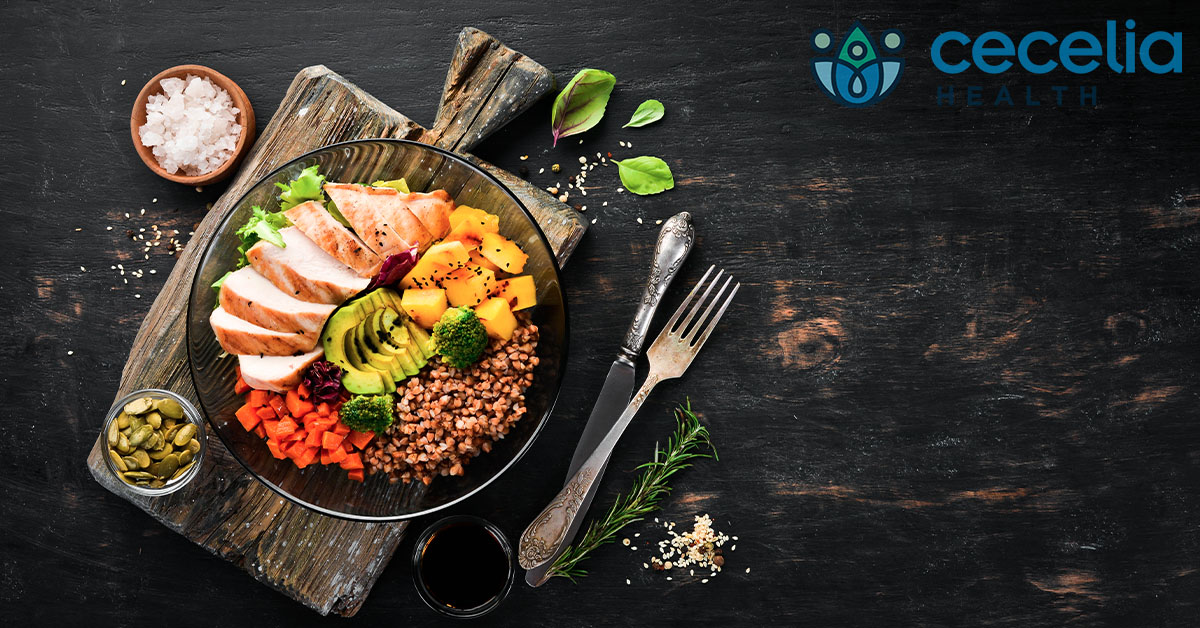Building a meal that is quick and healthy may present a challenge for many in a fast-paced society. It can easily be perceived as time-consuming or too demanding where one more thing is added to your plate. However, there are ways to make quick and healthy meals throughout the week. There are several benefits to preparing your meals, such as cost savings, lower calories, and sodium, as well as incorporating nutritionally balanced meals. Below are tips to help you build quick and healthy meals:
1. Stock your kitchen. Keep household staples and favorite items on hand regularly. Common household staples include bread, pasta, rice, quinoa, eggs, canned or frozen fruits and vegetables, herbs and spices, meat or meat substitute. Be sure to rotate new items that you bring home to use the older items first. If you notice you may not have the time to eat all the fresh produce you purchased, chop it up and store it in the freezer for a later time. If you are not sure how to properly store your food or are not sure how long food can be stored for, visit the FDA website on safe food storage tips.
2. Plan. Create a menu for the week or plan ahead. Be sure to have your menu items stocked in your kitchen. If you have limited time during the week, consider prepping your foods on the weekend. You can batch cook on the weekends and portion out meals and snacks for convenience. Another alternative is you can simply marinate your meat or chop up vegetables for planned meals throughout the week. If you enjoy casseroles, you may consider cooking your meat and chopping your vegetables ahead of time and placing the ingredients in the freezer to take out for a later date.
3. Incorporate balance. Incorporating balance is a key strategy for quick and healthy meals. Balanced meals allow for a balance of nutrients, which can be beneficial for improving your energy, managing your weight or chronic disease, and keeping your immune system strong. Balanced eating is also enjoyable for your palate to have a variety of options. One way to identify if you have a balanced meal is see how many food groups your meal consists of. Does your meal offer protein, fruits, vegetables, dairy, and grains. Here are some balanced snack and meal examples:
- Stir-fry with rice or riced cauliflower, chicken, peppers, onions, pea pods,
broccoli, carrots (any vegetable you can think of), and meat or tofu - Tuna sandwich, an orange, and a glass of milk or container of yogurt
- An egg omelet with turkey sausage, onion, pepper, tomato, cheese served with a slice of whole wheat toast and strawberries
- Grilled salmon, salad with romaine lettuce, spinach, carrots, tomatoes, and an apple
- Yogurt with sliced almonds and berries
- Are you interested in more meal ideas? There are even more meal ideas from the USDA 30 minutes or less options here.
4. Include adequate fluid. While the above suggestions focus on a balance in food, it is equally important to ensure a balance in fluid. For more on healthy tips for hydration view this Cecelia Health blog here.
There are several benefits to preparing your own meals. Building quick and healthy meals may appear demanding, but it can be manageable by stocking your kitchen, planning ahead, and incorporating balance.
